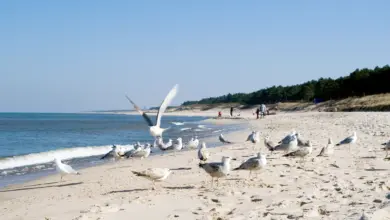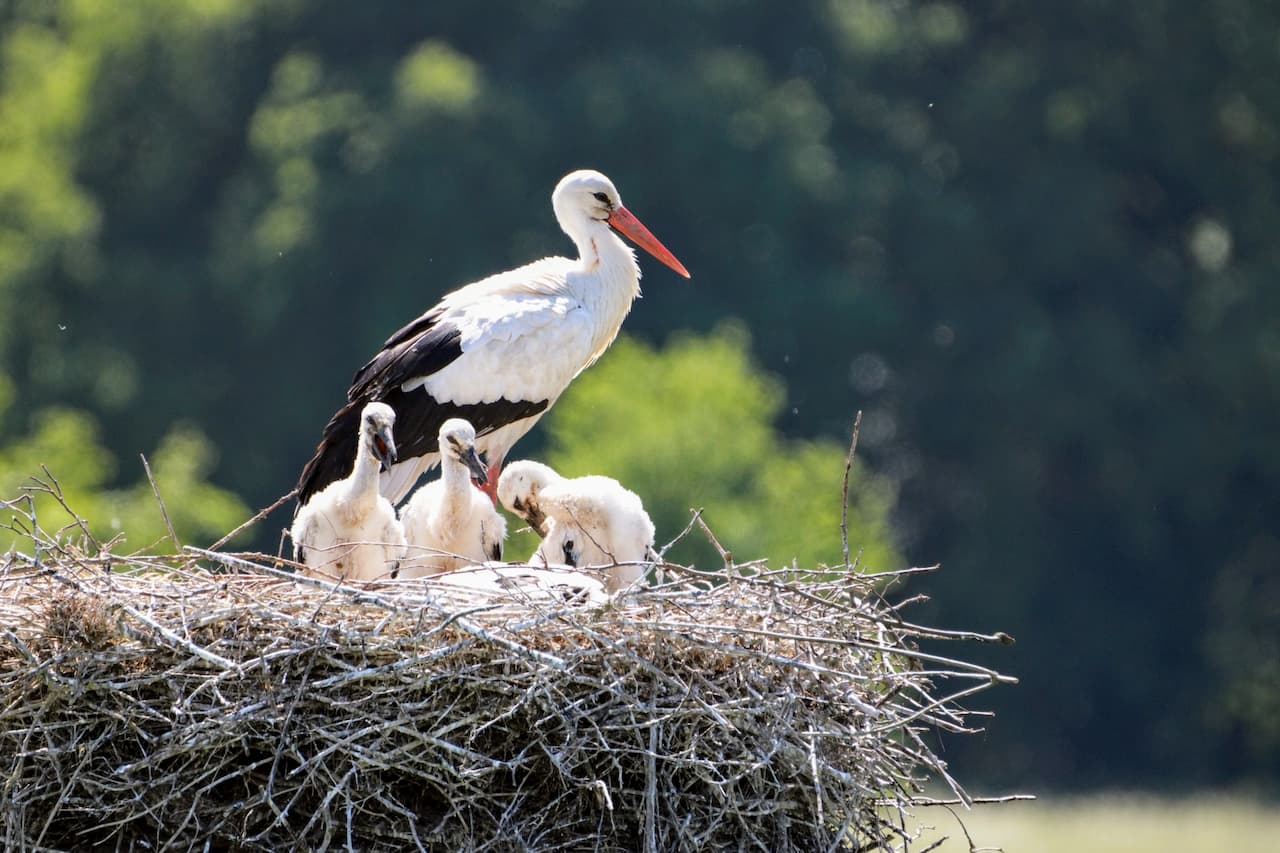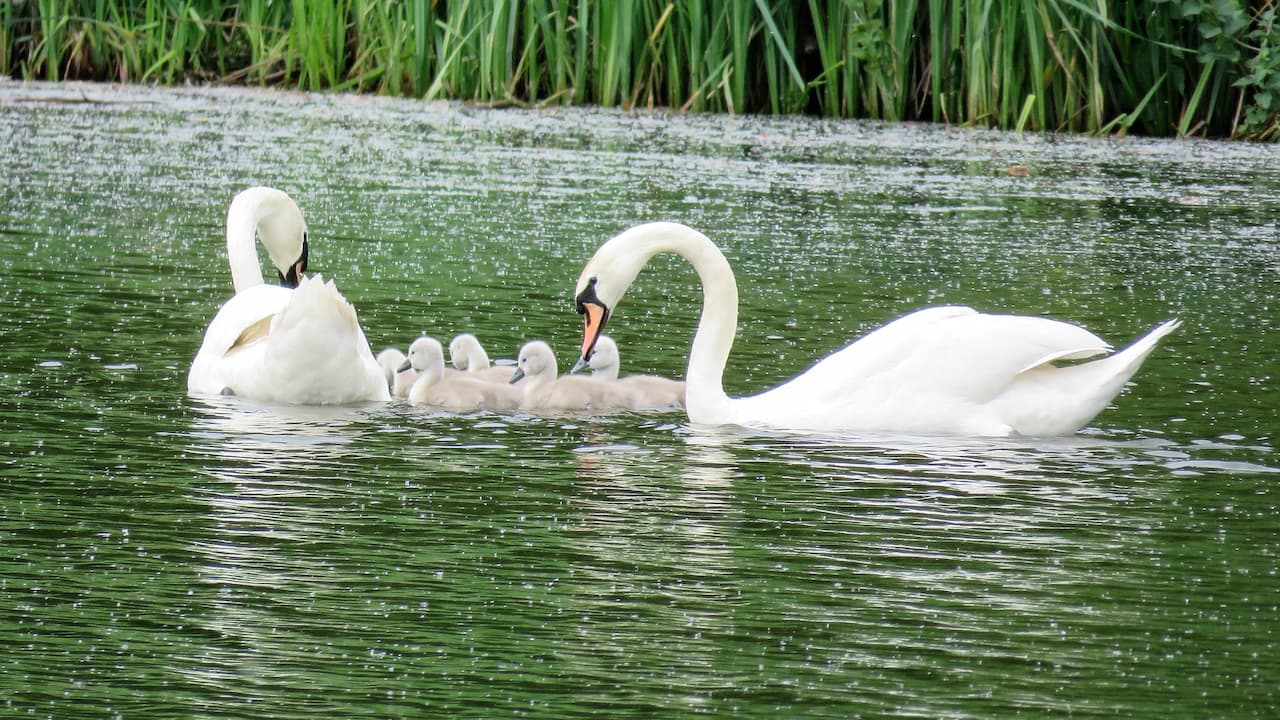The Toulouse geese (Anser anser) is a domesticated goose that was named for the French city of Toulouse where it originated from.
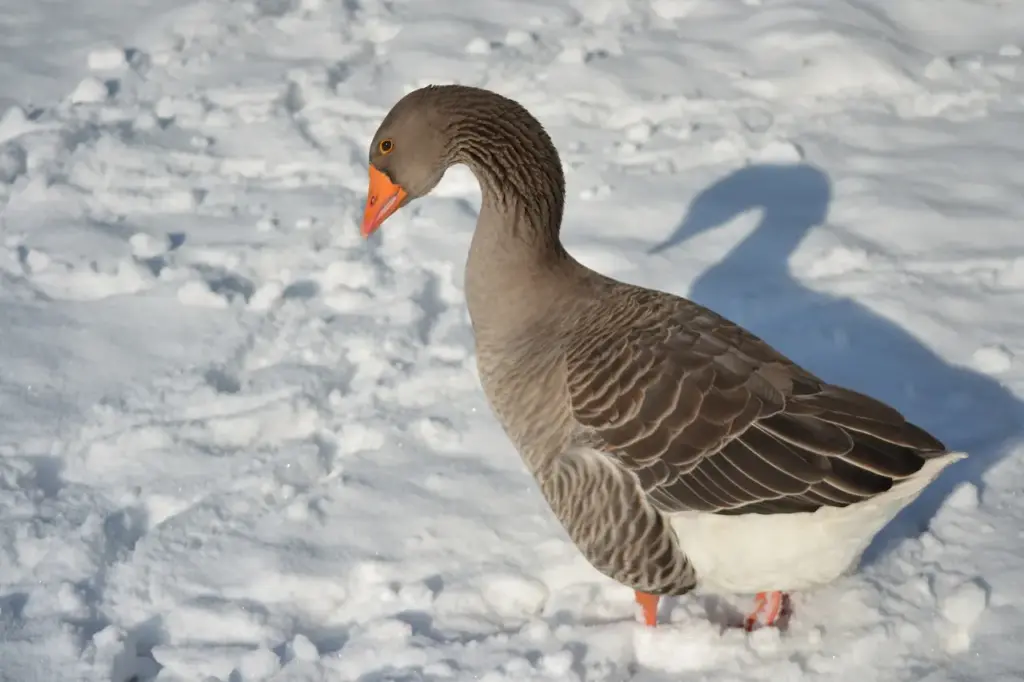
In France, this goose is known as “L’oie du Toulouse” and in Germany as “Toulouser Ganz.”
It was originally derived from the European Greylag Goose (Anser anser) to meet the growing demand for the French delicacy Pté de foie gras – a dish made of goose or duck liver that has been specially fattened.
Nowadays, this breed is commonly raised as meat goose/farm animals, as well as for show birds.
Recognized types (American Livestock Breeds Conservancy): Production, Standard Dewlap, and Exhibition.
- Production types are large (18 – 20 lbs) utility birds found on small farms and homesteads. They are moderate egg-layers (25-40 eggs a year) and are well suited to living in large gardens, pastures, or orchards. However, they require protected shelter at night and during prolonged periods of rain. Ganders may be paired up with three or four geese.
- Standard Dewlap Toulouse Geese weigh between 20 – 30+ lbs and are bred for their ability to gain weight rapidly and produce a foie gras (fat liver) when *force-fed. (*Forced feeding – used in the production of foie gras – is controversial, as a tube is forced down the throat to force down large quantities of fat and grain mash resulting in a diseased, enlarged liver. This procedure is also commonly referred to as “noodling” as noodles are sometimes used when force-feeding these geese). They are moderate egg-layers (20-35 eggs a year). Standard Dewlap Toulouse is one of the most challenging domestic goose breeds to raise successfully. Fertility and viability of eggs are often substantially lower than for other breeds.
- Exhibition Toulouse Geese have exaggerated dewlaps (longitudinal flaps of skin that hang beneath the lower jaw) and keels (an extension of the breastbone) and are bred as decorative show birds
Description
This breed comes in Grey (original color), Buff, and White varieties. The White version was standardized in 1982 and the Buff in 1997.
The Toulouse plumage is generally fuller and softer than that of the average farmyard goose.
These heavy birds are not good fliers.
Adult Description
The males (ganders) are generally larger, weighing about 26 pounds (12 kg) and the females (geese) weigh about 20 pounds (9 kg).
The feathers come in varying shades of grey (applicable to the original grey variety). The back and tail are typically a larger grey, fading to a lighter grey on the neck and head. The plumage below (abdomen, chest) is whitish.
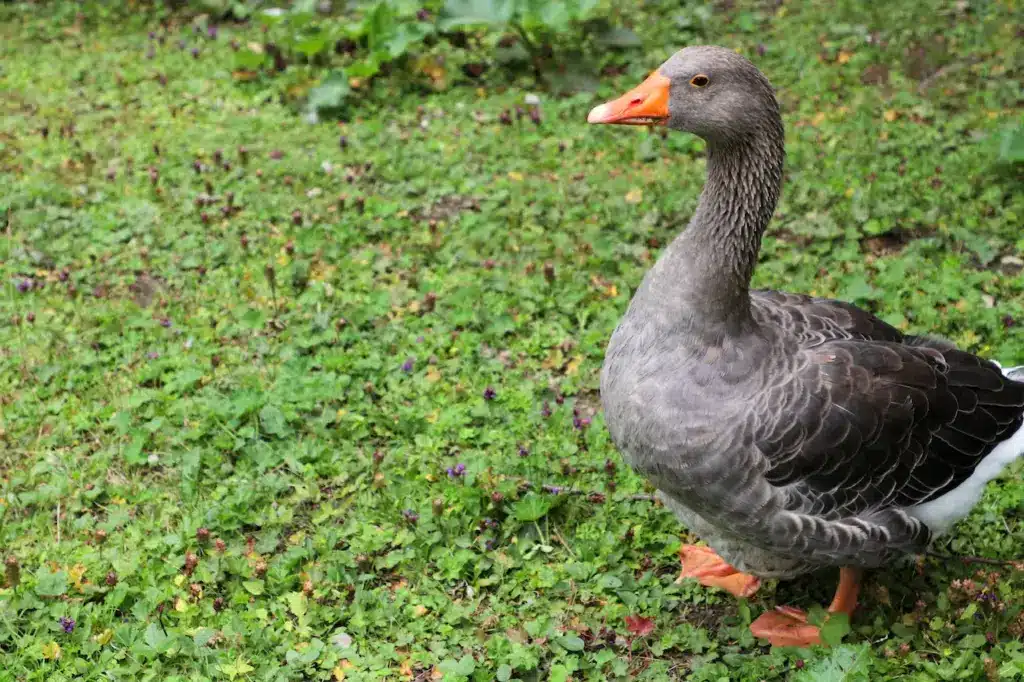
The bill is orange, and the legs and feet are reddish-orange. The skin around the dark eyes is also orange, giving the appearance of an orange eyeliner.
Juveniles
Goslings are covered in greenish-grey down. They have black bills, legs, and feet.
Diet / Feeding / Care
Toulouse Geese typically forage for tender weeds and grasses. In order to maintain a good weight, their diet typically needs to be supplemented with more concentrated feed, such as grain and waterfowl pellets.
Note: Toulouse geese are grazers, but it is important to make sure that the grass is short and tender. Long and stringy grass can result in impacted gizzards. They should also have access to sand and grit. Regular worming is also recommended.
Females are usually good mothers but tend to be clumsy and easily crush eggs. A large hay-covered tray for the eggs is going to help minimize this. In some instances, foster geese (such as Muscovies) are used. The white eggs are incubated for 28 – 34 days. They can be kept in pairs or trios.
They prefer ponds or shallow-edged trays/children’s sand pits.
These geese mate for life.
They can live 20 – 22 years; although the average lifespan is 10.
‘Health Problems
Regular worming may be needed.
Maggots: Toulouse Geese are susceptible to flystrike (maggots) on open cuts or scratches. These sores are often disguised by their feathers.
Weight Gain: Allowing them to become overweight is going to shorten their lifespan.
Chronic Wet Feather: A condition when a plumage is no longer able to properly repel water. Their soft feathers don’t seem to dry out as quickly as the plumage of other geese and they do not well in times of prolonged rainfall. They should always have access to dry shelter. They also need to be able to keep their feathers clean and in good condition – and for that, they also need to have opportunities for bathing (daily). After a bath, they usually preen themselves — gathering the oil they need to spread over their feathers using the combs inside their bill. This process will help waterproof the feathers.
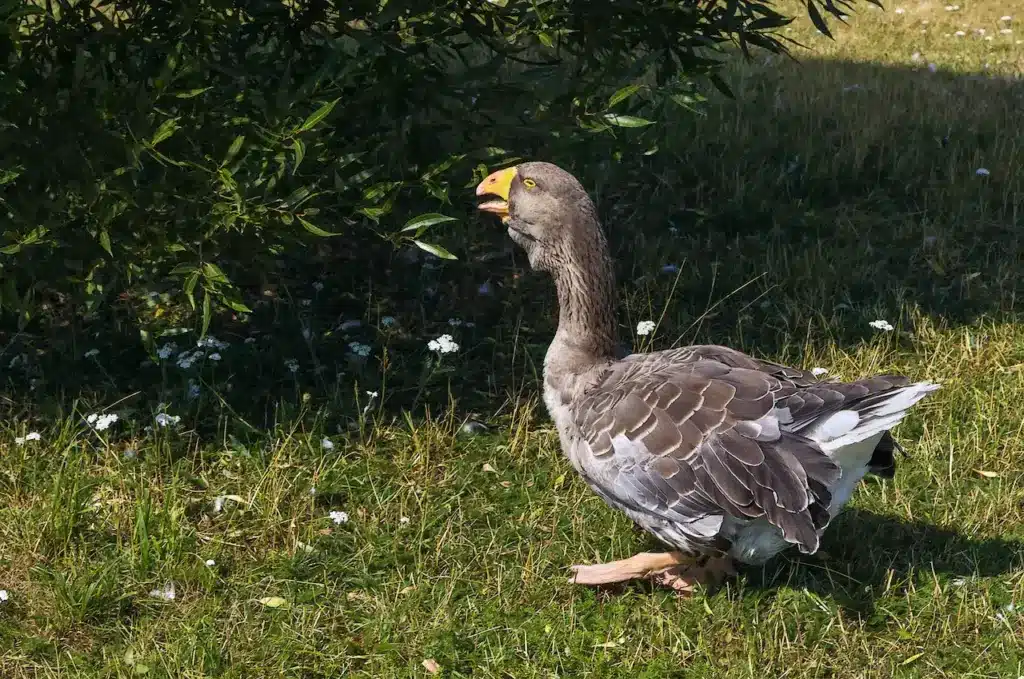
Personality:
The Toulouse Geese are generally calm, quiet, and slow-moving. They don’t like to be startled or rushed. They are very trusting in nature – a trait that makes them popular as pets.
They don’t do well in flocks of mixed breeds; as other — more aggressive breeds – will generally upset the gentle Toulouse Geese.
They enjoybathing and playing in water, and breeders will also mate in water.
They typically remain close to home.
Diet / Feeding:
Ducks and geese generally feed on larvae and pupae usually found under rocks, aquatic animals, plant material, seeds, small fish, snails and crabs.


